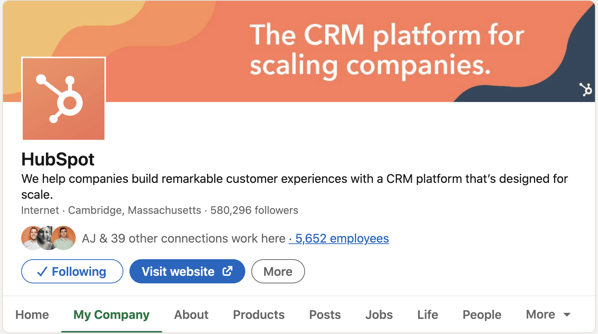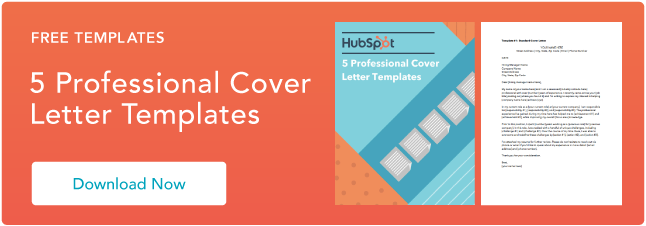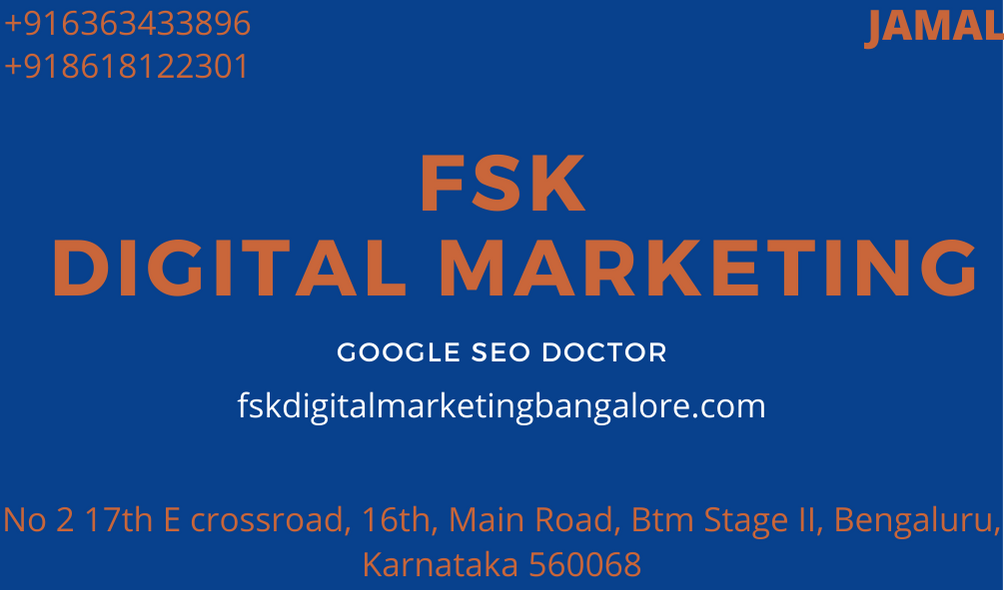Nowadays, companies have a computerized system that puts resumes through an online scanner which will automatically reject some applicants and push other applicants through depending on their qualifications.
So, What does this mean for you as a job seeker? Well, the cover letter attached to your application is more important than ever.
Have you been asked to attach a cover letter to your job application? Perhaps you're struggling to write one that lands an interview or have no clue what one is at all.
Whichever situation you're in, we've crafted this ultimate guide to cover letters. You'll find out how to write one that gets read, what to include, and browse tons of templates to gain inspiration.
Are you ready to land the job of your dreams through a perfectly crafted cover letter?
Awesome!
You can dive straight in, or jump to the section you'd like to read.
How Long Should a Cover Letter Be?
Okay, so you're all fired up and ready to craft the cover letter of the hiring manager's dream. That's great! But how do you manage the fine balance between in-depth and overwhelming?
A good cover letter is long enough to communicate why the recruiter should pick you … but not long enough to bore them to the point where they'll need a strong coffee.
One page is usually enough to cover everything you'll need to include, without losing the recruiter's attention and having your cover letter tossed into the trash.
Let's go into those items in more detail:
Your Name and Address
Kick off your cover letter by adding your name and address to the document.
This step is pretty self-explanatory, but it allows the recruiter to easily connect your cover letter to your resume (especially if they're being printed).
Your name and address also make it easier for the recruiter to get in touch with a job offer. And that's the aim of our letter, right?
Their Name and Address
Similarly, you should add the name and address of the company or person you're writing to.
This shows you've done your research and allows the hiring manager to receive your letter if it's sent to a generic company email address.
The Date of Writing
Make it easier for the hiring manager to file your application by including the date on your cover letter.
Even if you're not successful this time around, the company might store your letter and refer back to it when they're hiring for another position!
Why You're Writing the Letter
We know that the aim of a cover letter is to persuade the hiring manager you're the best fit for their job. But, be sure to open your letter strongly, with 1-2 sentences that'll grab their attention and quickly make them realize they're reading a cover letter.
Something like this will usually do the trick:
"I'm writing to discuss the content strategist role at HubSpot."
Why You're a Perfect Fit for the Job
The next section of a cover letter structure is the fun part -- it's where you'll convince the hiring manager they should hire you — and not the person whose resume is behind yours.
In this section, answer these questions:
- Why should this company hire you?
- What skills do you have that will help complete the job better than anyone else?
- What makes you a good employee?
- What extra qualifications do you have that are relevant to the role?
Once you've answered these, the recruiter will have a solid understanding of who you are, and (hopefully) be convinced to hire you!
What You Can Offer the Company
Have you ever heard the advice to "always sell yourself in a job application"? That concept can be applied to cover letters, but remember that recruitment isn't all about you.
Businesses measure success in terms of results. The company looking for a new employee will want to know what they bring to the table and how they'll shape their business' future. New candidates are rarely brought on board solely for the soft skills listed in their resume.
That's why this part of your cover letter structure is arguably the most important.
In less than two paragraphs, show the business what you can do — and prove you've done it before (preferably with examples).
Not only does this give you the opportunity to show off your skills, but the company can picture the success you'll bring to their business by hiring you.
Your Availability
In the marketing world, we're always told the importance a call-to-action can make. But, don't leave them to your blog posts: Explain your availability to the person reading your cover letter for the best chances of a follow-up call.
Great cover letters end with a brief section on the candidate's earliest start date. You could also include your availability for an interview and tell them you're happy to answer any questions they may have.
How to Address a Cover Letter
Earlier, we mentioned the importance of addressing the hiring manager by their name and address. This proves you've done your research and ensures the cover letter lands in the right place.
Personalized content does 42% better than non-personalized, so including the first name of the recruiter can go a long way.
But in a world where privacy is held close to our chest, you might need to do a bit of digging before revealing the name your letter should be addressed to.
Luckily, you can use the power of the internet to do this. To find their:
Name
Head over to LinkedIn and find the company's profile page. You can do this by entering their name into the search bar or searching for a link to their LinkedIn page on the company's website.
Then, click the number of employees to see all employees who are on LinkedIn:

You'll then be greeted with a list of all people (with a LinkedIn profile) that work for your target company. Simply work your way through this list to find the most relevant contact, or search
- Hiring manager
- HR manager
- Recruitment manager
… to find the most suitable name to address in your cover letter.
Address
You can find the address of the company you're looking to submit a job application to by finding the About or Contact page on their website.
This should be in their navigation bar, but can also be found by Googling their URL and "contact".
On this page, you should find an address for the company. If not, don't worry. Simply call one of the numbers listed or send an email to their support team. Ask for the company's general careers email address, and use this on your cover letter.
Opening a Cover Letter
Great job! You've done all of the digging you'll need to write a cover letter. It's easy from here.
After you've addressed the cover letter to the most relevant person, we'll need to open the letter with something relevant.
"Dear Ms. H.Spot" (using your own initials, of course) will keep it professional.
But, if you've struggled to unveil the hiring manager's name, stick with "Dear Sir/Madam" or "Dear Hiring Manager".
How to Close a Cover Letter
Once you've followed the above cover letter structure and explained your availability, it's time to wrap it up.
If you've addressed the letter personally, end with "Thanks".
If you haven't, opt for "Sincerely".
Then, sign the cover letter with your full name.
Should You Include Salary Requirements?
Talking about money is a tricky subject. Some feel uncomfortable discussing wages in the first interaction with a company, so it's best to avoid discussing salary requirements in your cover letter unless it's stated as a requirement.
Including salary requirements in your cover letter could set a bad tone. Instead, allow your letter to show off your skills and make a convincing argument as to why they should hire you.
Save the money talk until your interview!
Are Cover Letters Necessary?
Cover letters are often a required field for online job applications. But do you really need to include one if it's optional, you're sending your resume through email, or applying in-person?
While a few years ago the answer wasn't clear cut, in today's age cover letters are more important than ever.
In 2017, just 26% of recruiters considered cover letters important in their decision to hire an applicant. That means they were influential in hiring decisions, but not essential.
However, according to 2021 research, 83% of recruiters agree that, although not strictly necessary, a well-written cover letter gives you the opportunity to demonstrate that you are a great fit for the company you are applying for. Additionally, in a separate question, 83% of respondents claimed that a great cover letter can secure you an interview even if your resume isn't good enough.
If those stats aren't enough to convince you of its importance, 74% of recruitment decision-makers prefer to receive job applications that include cover letters apart from resumes. And even if submitting a cover letter is optional, 77% of recruiters will give preference to candidates who did send a cover letter.
Plus, since 69% of surveyed workers believe getting a job in 2021 will be much harder or somewhat harder than in previous years, adding a cover letter to your application is a great way to stand out.
Especially since only 35% of candidates attach a cover letter to their application when it's optional and only 38% of candidates submit a cover letter when it's required.
Writing a cover letter will allow you the chance to communicate with the hiring manager. You're given more space to tell them why you're the perfect fit for their job, meaning you don't have to rely on bullet-pointed lists in your resume.
Cover letters also help to build your personal brand. By going the extra mile (even when it's not required), you're proving key skills like being a hard worker, having good communication, and taking initiative.
In short: Cover letters aren't absolutely necessary, but they do have stark advantages. If there's an option to upload one when applying for any job, do it — even if it's not required!
How to Write a Cover Letter
Writing a cover letter can be tricky. Even the best writers can struggle with communicating their skills in the right manner, but these tips will help you create a job-winning document.
The structure of your cover letter is arguably the most important thing about writing one.
Not only does a good structure help you to organize your points effectively, but it can help a hiring manager to quickly review the details you're sharing.
7 Tips for Writing Great Cover Letters
So, you've crafted a cover letter and you're almost ready to hit send.
Now, wait a minute ...
Before attaching to your resume and hoping for the best, use these seven tips to make sure your cover letter is as great as can be:
1. Don't babble.
Earlier, we mentioned how the best cover letters strike the perfect balance in their length.
Our best tip for writing cover letters is to avoid any babble. Don't add fluff that fails to add anything of value. Not only are you wasting your time by writing it, but you're wasting the hiring manager's time, too.
You want to keep the recruiter's attention, which can be easily lost through babbling. Cut the jargon and corporate-speak that hiring managers have heard before. (Like "leverage" and "thinking outside the box".)
Yes, professionalism is important, but be harsh and critical when editing your cover letter. If a sentence doesn't add value, get rid of it!
2. Tailor it for the company and position you're applying for.
The one-size-fits-all approach doesn't fit well with cover letters.
You're applying for different roles at various companies, but don't let a change in name and address be the only amendments you make.
Remember that a cover letter should explain why you should be hired for a specific role instead of anyone else. It's highly unlikely that multiple companies will hire for exactly the same position, so take some time to personalize your cover letter for every position you're applying for.
3. Add more value than your resume.
Although cover letters are used in partnership with resumes, be wary of falling into the trap of making them carbon copies of one another.
Cover letters that regurgitate everything already explained on a resume are useless. Instead, use the documents to compliment each other by:
- Including new skills.
- Elaborating on how your qualifications would help you in the role.
- Sharing how specific experience gives you an advantage over other candidates.
If you need to include the same thing in both documents, add "as listed in my resume …" rather than copy and pasting the same content.
Put yourself in your recruiter's shoes: Reading the same thing multiple times would be annoying, right? (Remember, we don't want to bore them!)
4. Include data-backed examples.
When referencing experience from your resume, use your cover letter as an opportunity to explain in detail — with examples.
Examples allow the company to picture the success you could bring if they hired you, rather than the person next in their resume pile. But, data-backed examples give an extra edge.
Let's use an example. Which of these options is more impressive?
- I increased leads for the company.
- I increased leads by 35% in one month through a single blog post, which became the company's biggest revenue source.
It's option B, right?
5. Tell a story.
Following on from the previous step, you could elaborate on your data-backed examples by telling a story.
Storytelling helps with relatability and gives a hint of your personality in a cover letter. It also makes the recruiter remember your cover letter amongst a sea of other one-page documents in their review pile.
However, this cover letter tip comes with a warning: Don't overdo it, and make it relevant. Remember what we said about babbling?
Including a story about how you adopted your pet cat is unlikely to influence someone into hiring you. On the other hand, a story on how you created a company's blogging strategy to achieve your data-backed results is.
6. Get a second pair of eyes on it.
Even the best writers make occasional mistakes, but some hiring managers can be strict with grammatical errors — even if you're not applying for a role where writing features heavily in your daily to-do's.
That's why our sixth cover letter tip is to get a second pair of eyes on it.
Email it to a friend or ask a family member to glance over it before you hit "send". Ask them to highlight any spelling mistakes or suggestions to improve how you're communicating with the person reading it.
You never get a second chance to make a first impression. Seeing as though a cover letter is one of the first documents a recruiter sees, try to make it perfect!
7. Be unique.
Finally, make your cover letter unique.
If you're applying for a creative role, experiment with colors, subheadings, and layouts.
If you're applying for more of a traditional role, be wary. Not everyone is a fan of bright, bold cover letters, but you can scope your limits by getting a feel of their company culture.
Are they strict and professional, or does the company like to have fun? (You can usually get a feel of this from their website or social media profiles.)
Testing the level of uniqueness can be a case of trial and error. If you're not getting great reactions from your cover letter, revise and try again.
Cover Letter Examples
We understand that inspiration can go a long way. That's why we've created a one-stop-shop for cover letter examples, which are available to view here.
You're also free to browse our collection of cover letter samples for extra inspiration on formatting your cover letter and learning from those who've helped to land dream jobs.
Conclusion
Congratulations! You've now got a fantastic cover letter!
Don't forget to send it with your resume for each job you apply for.
You'll soon be flooded with responses to your application — including compliments on the contents of your cover letter, job offers, or invites to interview!
Editor's note: This post was originally published in September 2018 and has been updated for comprehensiveness.
from Marketing https://ift.tt/2oCa6Kedigital marketing agency
![→ Click here to access 5 free cover letter templates [Free Download]](https://no-cache.hubspot.com/cta/default/53/3f347702-d7e9-4e59-9fe4-be4cd7bad191.png)








